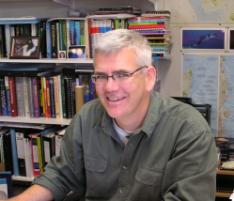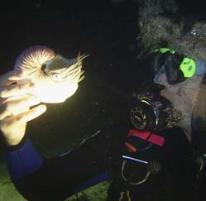Scot of the Great Barrier Reef now envy of northern hemisphere colleagues
Published on 30 August, 2007
Dr Billy Sinclair honed his scuba diving skills in the seas off Scotland, where he says a huge lump of sunken metal might be the most exciting thing to see in the cold dark water.
How things change; his research playground is now most of the length of the Great Barrier Reef and he frequently Emails underwater photos to his former colleagues to show them the difference.

Dr Sinclair and his research team from the Marine Molecular Genetics group at Central Queensland University need to roam far and wide over the reef to check how much mixing there is between populations of fish from various locations.
In other words, they are checking not only the diversity of species but also the extent of the genetic diversity found within species.
The researchers are also:
Checking abundance patterns at monthly intervals to detect if there are different spawning times in different sections of the reef.
Comparing fish diversity levels on bleached and unbleached sections of the reef - providing a hint of changes ahead from global warming.
Studying the genetics and evolutionary history of Nautilus - the living fossil relative of the octopus and cuttlefish. \

Their home patch is around the Keppels section of the reef - off Yeppoon - but they are doing comparative checks much further north and also in the far-off oceanic lagoon system of Osprey Reef, based on an extinct volcano which has been much less impacted by fishing.
All this data will help with future planning for the staggering of fishing zone closures based on the variations in local conditions.
Dr Sinclair explains that an accepted idea behind zonal closures is that fish numbers will replenish in a protected location and then spread out to repopulate other areas. However, it is not yet known how much mixing really goes on between different species and across the various parts of the Great Barrier Reef.
The CQU researchers use light traps, plankton nets and video cameras to gather samples and then use microscopes and also DNA comparisons to detect the subtle levels of diversity between fish.
Their DNA sequencing also feeds into the Fish Barcode of Life Initiative (FISH-BOL), a global effort to coordinate an assembly of a standardised reference sequence library for all fish species. Details are at: http://www.fishbol.org/
One of Dr Sinclair's students has been developing a comprehensive fish species photo ID chart which can be used on board the research boat.
The research team also has a technology called ‘baited remote underwater video cameras' to help with fish counts and species comparisons across different zones.

